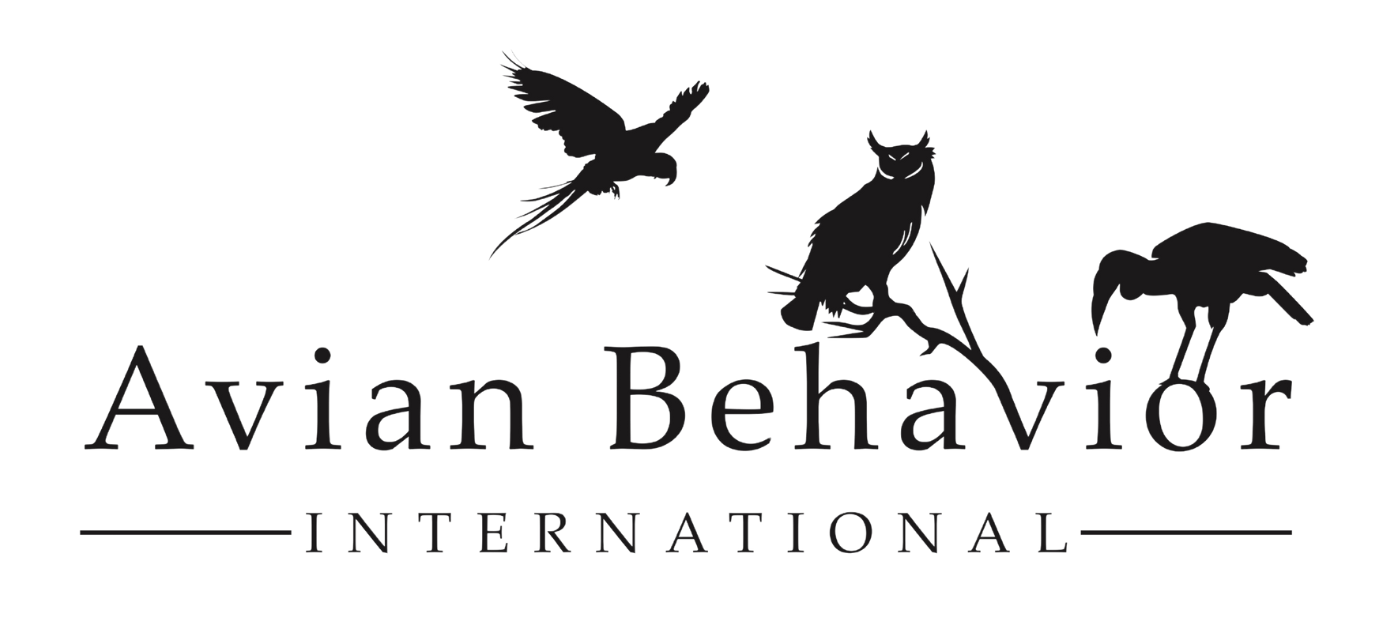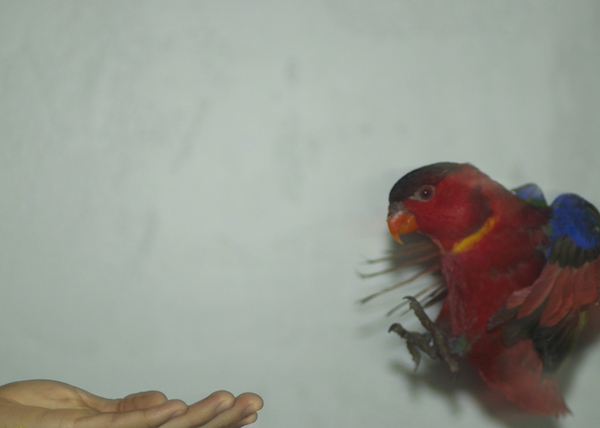
02 Feb Teaching Adult Parrots to Fly
As our understanding of how to keep our companion parrots healthy physiologically and behaviorally evolves with updated veterinary and field research, many companion parrot owners are asking for fully flighted parrots as youngsters or allowing their adult parrots’ wings to grow out. That said, many parrot owners have found that just because a parrot’s wings grow out does not necessarily mean that the bird will automatically take flight, nor will it necessarily lead to a skilled or confident flyer.
Older Parrots and crash landings
In fact, speaking in broad terms, the older a bird is, the less likely it will fly on its own volition, or at all. This is due to learning history and the exact developmental period that the bird was clipped as a youngster. If it never learned to fly and its wings were clipped promptly as soon as they became hard penned or when they had their first crash landings, then the parrot likely does not even access flying as a form of getting to point B from Point A. If it was a confident flyer, lost its ability to fly, and had some crash landings that were painful, this can also leave a strong impact on the parrot’s memory that flying is a strongly negative experience, and its wings are not to be trusted. On the other hand, if the parrot was allowed to properly fledge at the appropriate biological window, allowed to fly, perfect landings, turns, and take offs from a variety of perches, and then clipped, chances are much higher that the bird will regain its ability to fly well when allowed to regrow its flight feathers.
What is wing loading?
Another variable that impacts how well a parrot regains its ability and its willingness to fly is wing loading. Wing loading is the ratio of body weight to wing surface area. A parrot that has high wing loading has a relatively high weight 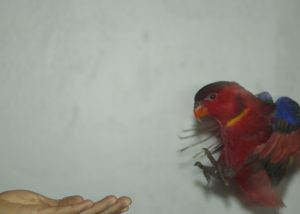 compared to its wing surface area. Parrots such as Amazons, African Greys, and Pionus have high wing loading ratios. They tend to fly like grenades, and if they crash, they are more likely to damage their keels. Cockatoos, cockatiels, conures, lories, and some macaws have a lower wing loading. They are relatively light on their wings. Lower wing loaded birds tend to recover flight capabilities more easily.
compared to its wing surface area. Parrots such as Amazons, African Greys, and Pionus have high wing loading ratios. They tend to fly like grenades, and if they crash, they are more likely to damage their keels. Cockatoos, cockatiels, conures, lories, and some macaws have a lower wing loading. They are relatively light on their wings. Lower wing loaded birds tend to recover flight capabilities more easily.
The above variables are generalizations. Each parrot is an individual with unique learning history and needs to be treated as such in order to be successful. There are plenty of cockatoos with keel injuries and African Greys that regain the ability to fly after being clipped for years. It is, however, important to take into account anatomy and natural history to identify what helps create a successful learning environment for our companions. It’s also important to remember that some older parrots may not overcome their negative learning history, or may take many years to do so.
The pros and cons of teaching older parrots to fly
The pros and cons of training flight then are an important assessment to address before training even starts. Benefits include:
• improvement to cardiovascular and bone health
• improvement to lifestyle
• increase in the ability to make choices
• more natural way of life
• form of enrichment in and of itself
• increased access to enrichment
• and many others
Costs and challenges may include:
• increased risk of flying into windows, walls, or out the door
• underdeveloped skills can lead the bird to fly or crash where it does not wish to end up
• access to household items not considered enrichment
• increased need for training to stay on appropriate play areas and out of valuable or potentially dangerous household areas
• the potential for a serious injury or a fatal accident if the parrot is spooked into flight
• and many others
Taking an accurate assessment of these benefits and challenges can save a lot of heartache and stress in the long run. As a huge proponent of flight, the author recognizes that training an adult parrot to fly is an enormous task and having a flighted bird in a busy home with young people walking in and out of the house without a lot of care about open doors can create a situation in which the bird’s life is in danger. This decision must reflect the gravity of consequences.
Tools of the Trade: training tips for teaching older parrots to fly
A steady perch is another necessity for flight training. Making sure that the bird can launch off of something sturdy and straight is helpful. When a parrot doesn’t have great muscle tone, it will use its feet to launch itself, and if its perch wobbles, it can create miscalculations in its landing, leading to lack of trust and less take-offs. Ensuring that it has a steady perch that won’t wobble and plenty of room to flap its wings so that your parrot will not hit its wings on nearby 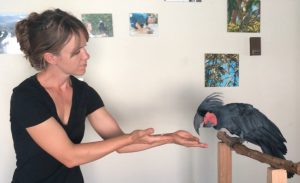 furnishings will help create a successful environment. Our members on the Avian Behavior Lab can appreciate our work with Snowball the Umbrella cockatoo, that his lack of trust in perching would create and compound issues such as biting and flying at faces, as well. Much of this was due to Snowball’s early history of living with a couple that was afraid of him and never let him out of his cage, thus giving him few survival and what I call “thrival” skills to be a successful flockmage.
furnishings will help create a successful environment. Our members on the Avian Behavior Lab can appreciate our work with Snowball the Umbrella cockatoo, that his lack of trust in perching would create and compound issues such as biting and flying at faces, as well. Much of this was due to Snowball’s early history of living with a couple that was afraid of him and never let him out of his cage, thus giving him few survival and what I call “thrival” skills to be a successful flockmage.
Another often overlooked component is to conduct the training sessions in a familiar space. Taking the bird into an empty room or garage where it is uncomfortable or even an outdoor aviary that the bird isn’t used to yet will slow down progress. New behaviors are less likely to happen in new environments as the parrot has not had the full opportunity to measure the threat level. This is a natural part of its behavioral repertoire, much like it refusing to show off its vocabulary in front of your friends. Taking into account these small variables can have a huge impact on your sessions.
step by step how to’s for teaching flight in parrots
The first step to teach the parrot to step up using positive reinforcement. This step up should be so well rehearsed that the bird should see the visual cue of the hand in step up position and race to the hand to step up. If your parrot does not have the step-up cue trained in this way, then it’s a relatively straightforward process by which we train the step-up behavior in a different way. Even if he does, we can still strengthen the behavior to prepare for flight training by adding high value reinforcers to step-up training and practicing with a few repetitions in preparation for flight training. Step-up training with positive reinforcement has been described in previous articles, such as Part II of Living a Bite Free Life with Your Parrot, and this process can be reviewed to support the critical foundation of these skills.
Once your parrot sees your hand as the most important place to be and comes running when you present it, it’s time to start your flight training. The reason why we start with positive reinforcement is because giving your parrot the option 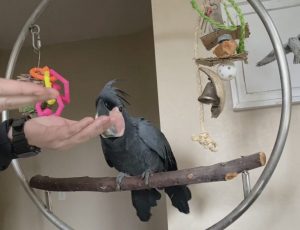 for flight is the most important way of developing skills safely. Casting your bird off the hand, even if on to a soft padded area or close perch is not only unsafe for your bird, but also builds distrust. Your parrot doesn’t have the option of when or if to leave the hand, and because it is not confident or skilled in the air, both your hand and the act of flying will most likely become a source of stress, distress, and thus have a negative impact on its health and your relationship. Even in the case of accomplished, skilled flying birds, it is never recommended to cast them off the trainer’s hand and to do so is a form of negative reinforcement: you are using your hand as an aversive to increase the behavior of taking off, and in effect, punishing (or decreasing) the behavior of sitting on the hand. Tossing a bird off the hand can lead to the bird avoiding your hand, avoiding engagement overall, and even biting.
for flight is the most important way of developing skills safely. Casting your bird off the hand, even if on to a soft padded area or close perch is not only unsafe for your bird, but also builds distrust. Your parrot doesn’t have the option of when or if to leave the hand, and because it is not confident or skilled in the air, both your hand and the act of flying will most likely become a source of stress, distress, and thus have a negative impact on its health and your relationship. Even in the case of accomplished, skilled flying birds, it is never recommended to cast them off the trainer’s hand and to do so is a form of negative reinforcement: you are using your hand as an aversive to increase the behavior of taking off, and in effect, punishing (or decreasing) the behavior of sitting on the hand. Tossing a bird off the hand can lead to the bird avoiding your hand, avoiding engagement overall, and even biting.
Now that we have done our step-up repetitions and our bird is sprinting across our training perch to our hand, we can start pulling our hand a few repetitions at a time until it is just far enough that our bird has to use his beak to pull himself on. At this point, I like to vary the distance a little sometimes making it easier and sometimes harder so that the bird doesn’t really know what to expect. Once the parrot is pulling himself on to the hand, we are ready to ask for a little hop. Now, the distance your hand has to be to get that hop will depend on how large or small your parrot is, but it’s a good idea to have it just out of reach of your bird’s beak. You don’t want him to be able to “outsmart you” by pulling your hand closer and climbing on. This is perhaps the most challenging step, and its success really depends on the bird. I try everything to not wiggle my perch hand, but try and tempt him with the food hand.
If I can’t get that first hop the first opportunity I ask him, I might walk away for a few seconds and try again. I might do this a couple of times to really try to get the parrot to anticipate the cue and try to come to my hand. If after a few minutes he just won’t overcome that fear of hopping, I will step him up for the tiniest, most boring morsel of food that he 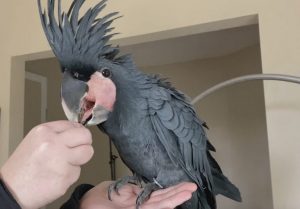 will possibly step up for and session will end. I don’t want my bird expecting that he cannot perform the requested cue but still get excellent things. We might try again later or even the next day. Consistency is important when training new skills in order for the bird to learn from their successes and failures from the previous session.
will possibly step up for and session will end. I don’t want my bird expecting that he cannot perform the requested cue but still get excellent things. We might try again later or even the next day. Consistency is important when training new skills in order for the bird to learn from their successes and failures from the previous session.
Once we get that first hop, it’s okay to make it a really big deal! Throwing a party, as long as we don’t scare our parrot with our enthusiasm, can help him understand that what he did was really good, and he can’t get some extra special treats to match the effort he put into the behavior. We can try for one more repetition and then give our bird a jackpot reward, which is akin to hitting the jackpot at the casino, in an effort that that lesson will stick with him through the next session.
How fast to move in order to increase the distance once we get that first hop largely depends on the bird we have in front of us. He will tell us how much is too much, when he wants to keep going, and when enough is enough. If we stay on one step too long, we can get stuck on that step and have trouble progressing. If we move too quickly, our bird can get 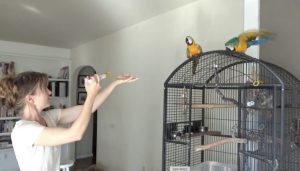 frustrated and displace or redirect his frustrations on objects or body parts around him. Parrots are like us, they can get sore from using previously unused muscles, which can make them tired and even grumpy!
frustrated and displace or redirect his frustrations on objects or body parts around him. Parrots are like us, they can get sore from using previously unused muscles, which can make them tired and even grumpy!
Opening up an adult parrot’s world to flight in the home can have tremendous rewards but also can introduce the bird to new hazards. It is not a decision that should be taken lightly but with careful thought that only the family can assess. While next steps take in to careful consideration how to flight-proof our fellow housemates and our home, this can be complicated and vary much on our situation. We have a whole course for this in the Lab! The training sessions are also a gift in trust in a way that only positive reinforcement can offer, and the journey itself is the reward.
